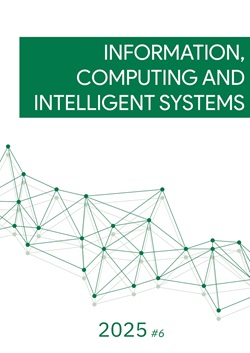Hybrid Voting Model for Decentralized Autonomous Organizations with Dynamic Quorum
DOI:
https://doi.org/10.20535/2786-8729.6.2025.337564Abstract
The article examines the problem of balancing security and flexibility in decision-making mechanisms within decentralized autonomous organizations (DAOs), which operate without centralized control through the use of smart contracts. To this end, two main voting models employed in DAOs are analyzed: the conjunctive model, which requires unanimous approval of a proposal by all participant groups, and the disjunctive model, where approval from a single group is sufficient. Both models have significant advantages and drawbacks: the former ensures a high level of security and protection of all parties’ interests but considerably slows down the decision-making process, while the latter provides speed and scalability but introduces risks of centralized influence.
In response to these challenges, a hybrid voting model is proposed, in which the type of logic is determined by the nature of the proposal. Specifically, critical changes, such as updates to governance rules or quorum parameters, must involve all groups, whereas routine operational matters can be decided through a simplified disjunctive procedure. The implemented smart contract architecture supports both mechanisms and enables DAOs to dynamically adjust quorum thresholds through separate governance proposals.
To evaluate the effectiveness of the model, a simulation of 1,000 voting processes was conducted under four different scenarios of participant activity: balanced, one-sided, and low overall participation. The results showed a reduction in the probability of deadlock situations and an increase in the share of successful votes when hybrid logic was applied, particularly under conditions of low or asymmetric participation. In addition, special attention was given to gas cost optimization: the disjunctive approach allows vote counting to be stopped once a quorum is reached by one group, thus reducing overall computational expenses.
Therefore, the proposed solution appears promising for both financial DAOs and decentralized infrastructures, particularly the Internet of Things, where speed, scalability, and secure coordination are especially important.
References
Liu, L., Zhou, S., Huang, H., & Zheng, Z. (2021). From Technology to Society: An Overview of Blockchain-Based DAO. IEEE Open Journal of the Computer Society, 2, 204–215. https://doi.org/10.1109/OJCS.2021.3072661
Han, J., Lee, J., & Li, T. (2025). A review of DAO governance: Recent literature and emerging trends. Journal of Corporate Finance, 91, 102734. https://doi.org/10.1016/j.jcorpfin.2025.102734
Balcerzak, A.P., Nica, E., Rogalska, E., Poliak, M., Klieštik, T., & Sabie, O.-M. (2022). Blockchain Technology and Smart Contracts in Decentralized Governance Systems. Administrative Sciences, 12(3), 96. https://doi.org/10.3390/admsci12030096
Esposito, M., Tse, T., & Goh, D. (2025). Decentralizing governance: Exploring the dynamics and challenges of digital commons and DAOs. Frontiers in Blockchain, 8, Article 1538227. https://doi.org/10.3389/fbloc.2025.1538227
Siegel, D. (2016). Understanding The DAO Attack: Blockchain strategist David Siegel gives a step-by-step overview of the attack on The DAO for journalists and media members. [Online]. CoinDesk. Updated: Jan. 13, 2023. Available: https://www.coindesk.com/learn/understanding-the-dao-attack
Santana, C., Albareda, L. (2022). Blockchain and the emergence of Decentralized Autonomous Organizations (DAOs): An integrative model and research agenda. Technological Forecasting and Social Change, 182, 121806. https://doi.org/10.1016/j.techfore.2022.121806
Lustenberger, M.; Spychiger, F.; Küng, L.; Bassi, E.; Wollenschläger, S. DAO Research Trends: Reflections and Learnings from the First European DAO Workshop (DAWO). Applied Sciences. 2025, 15(7), 3491. https://doi.org/10.3390/app15073491
Davidson, S. The nature of the decentralised autonomous organisation. Journal of Institutional Economics. 2025; 21:e5. https://doi.org/10.1017/S1744137424000341
Feichtinger, R., Fritsch, R., Vonlanthen, Y., Wattenhofer, R. The Hidden Shortcomings of (D)AOs – An Empirical Study of On-Chain Governance. In: Essex, A., et al. (eds) Financial Cryptography and Data Security. FC 2023 International Workshops. Lecture Notes in Computer Science, vol 13953. Springer, Cham. 2024. https://doi.org/10.1007/978-3-031-48806-1_11
Li, S., & Chen, Y. (2024). Governing decentralized autonomous organizations as digital commons. Journal of Business Venturing Insights, 21, e00450. https://doi.org/10.1016/j.jbvi.2024.e00450
Downloads
Published
How to Cite
Issue
Section
License
Copyright (c) 2025 Information, Computing and Intelligent systems

This work is licensed under a Creative Commons Attribution 4.0 International License.




